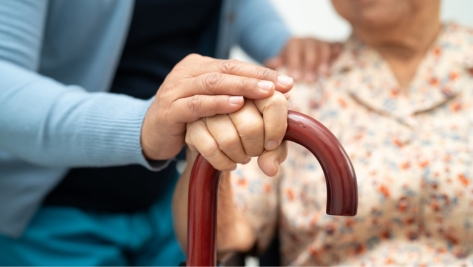The importance of CCTV evidence in injury claims

I am frequently instructed by seriously injured clients to bring claims on their behalf and quite often liability is disputed due to conflicting evidence, lack of independent witnesses and the list goes on. In such cases the existence of CCTV evidence can be crucial in determining liability.
Recently, I was instructed by Mr C, who was already a below knee amputee and who sustained complex injuries, including brain injury in a road traffic accident. At the time Mr C was using a wheelchair due to issues with his prosthesis. He was attempting to cross the road in front of a stationary bus, straddling a pedestrian crossing, when the bus moved forwards crushing him between this vehicle and another bus ahead. Mr C believes the lights were green for pedestrians and due to his vulnerability, he had alerted the bus driver by knocking on the front doors before proceeding, but it was obvious by the bus driver’s actions that he had not taken any notice. The bus driver only became aware that something was wrong when he heard a bang!
Due to his injuries, Mr C’s recollections of the accident were hazy, but he was certain he would not have just stepped out and put himself in such grave danger. There were no independent witnesses to the actual collision. The bus company alleged the lights were not working and the crossing was not in use.
Fortunately, the bus was fitted CCTV cameras and the evidence had been retained by the bus company. Whilst the footage did not show the full extent of the accident, it appeared to be consistent with my client’s instructions. The bus company offered to apportion liability on a 50/50 basis and whilst Mr C accepted that he was partly to blame, he did not accept that he was equally to blame. We were eventually able to compromise liability on more favourable terms.
In another case, also a road traffic accident, I acted for a cyclist was knocked down by a car in the middle of the night. She had also sustained brain injury and could not remember whether the lights had been green in her favour. Liability was disputed on the basis that she had gone against red lights and the police report was unfavourable. During the course of our investigation, we were able to track down the CCTV footage from the local authority which showed what had happened. The case settled successfully.
In a potential employer’s liability claim, my client fell from height and suffered severe brain injury. There was no one around and although he knew he must have fallen off the ladder, he had no idea how it happened. The CCTV camera had not been covering that area fully, but limited footage was sufficient to assist with the issue of liability.
Obtaining CCTV evidence in the case of Mr C was relatively straightforward as the claim was against the bus company whose camera it was. But in other cases it is not so easy and you may not even be aware such evidence exists. For example, there may cases where buses with CCTV cameras record accidents involving a pedestrian and another vehicle, but unless the details of the uninvolved bus are taken by police or witnesses, you will never know. And then you have the other problem where despite the existence of CCTVs, the footage is not available either because the cameras were not working or the footage was not kept. The retention policy varies from company to company and footage may not necessarily be kept unless it is relevant to their company. As there are no legal requirements to have CCTVs in place, there are no rules on how long their footage should be retained
It is apparent from these cases if there was no CCTV evidence, my clients’ claims would have either failed completely or the deductions from their compensation for “contributory negligence” would have been much greater.
CCTV evidence can make the difference of winning or losing a claim and every step should be taken to obtain that at the earliest opportunity, where possible.
* Disclaimer: The information on the Anthony Gold website is for general information only and reflects the position at the date of publication. It does not constitute legal advice and should not be treated as such. It is provided without any representations or warranties, express or implied.*
Please note
The information on the Anthony Gold website is for general information only and reflects the position at the date of publication. It does not constitute legal advice and should not be treated as such. It is provided without any representations or warranties, expressed or implied.
Our Latest Injury & Medical Claims Insights
- October 6, 2025
Jess’s Rule – a welcome reminder to reconsider persistent symptoms
- September 26, 2025
Intermediate track injury claims: the rise of early settlement offers
- August 26, 2025
Anthony Gold Solicitors welcome Helen Whittam as a new Support and Rehabilitation Coordinator in the Injury and Medical Claims Team
- August 19, 2025
Contributory negligence and children
- August 13, 2025
Video: From tragedy to triumph – Eliezer’s journey after a life-changing accident
- July 9, 2025
What is Contributory Negligence and How Could it Affect Your Claim?
Latest Articles
View allGuide: October 9, 2025
Guide: October 8, 2025
Contact the Conveyancing team today
Contact us today
"*" indicates required fields
Contact the commercial
& civil Dispute team today
"*" indicates required fields
Contact the Conveyancing team today
Contact the Conveyancing team today
Contact the Wills, Trusts
& Estates team today
Contact the Court of
Protection team today
Contact the Employment Law team today
Contact the Clinical Negligence team today
Contact the Family & Relationships team today
Contact the Personal Injury Claims team today
Contact the leasehold & Freehold team today
Contact the Corporate & Commercial team today
Contact the housing & disputes team
"*" indicates required fields














